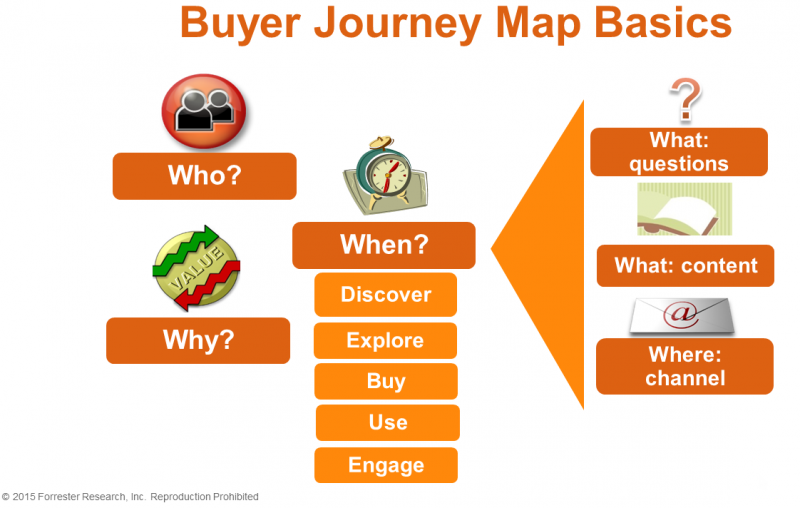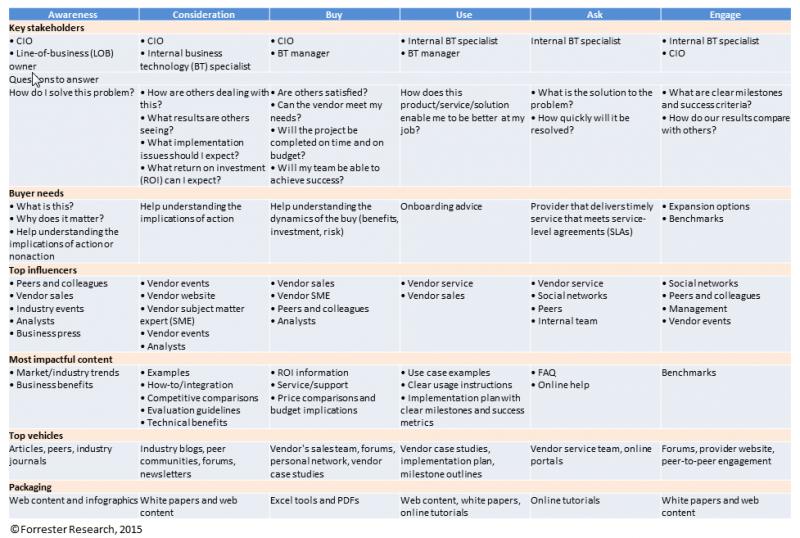B2B Buyer Journey Map Basics
Today’s buyers control their journey through the buying cycle much more than today’s vendors control the selling cycle. In a recent survey, 74% of business buyers told us they conduct more than half of their research online before making an offline purchase. This buyer dynamic changes the role of B2B marketing in a fundamental way. Marketing now owns a much bigger piece of the lead-to-revenue cycle. And B2B marketers must take responsibility for engaging with the customer through more of the buying journey. To do this, you need to engineer a cross-channel marketing strategy to successfully engage with buyers who proactively seek the information they need — through digital and social channels, from peers, on YouTube, at events, and through your sales reps — to advance their decision process. Of course, there’s no one right way to do this: some buyers prefer to engage with a sales rep who can help them create and evangelize a vision; other buyers want to educate themselves through professional contacts and peer-created content; and yet others are comfortable doing research on vendor websites. Buyer journey mapping is a technique to understand your buyers’ path to purchase. 
When developing a buyer journey map, remember the “five W’s” of interrogative investigation:
Who? B2B buyers purchase in teams. A senior executive might kick off a buying process but delegate the exploration to an individual contributor on the team. End users may be part of the evaluation process or not. Think about the prospective customer as a portfolio of buyer personas who each play different roles in the collective advance toward a decision.
Why? What outcome is the buyer looking to achieve? What need or pain is the buyer looking to ameliorate?
This will help you understand the buyer’s perception of value.
When? Buyers have different needs at different stages of their buyer journeys. It’s important to understand the buyer’s context and identify the questions that need to be addressed at each stage. It’s also important to understand what will trigger a buyer to move to the next stage and to identify the barriers to progression.
What? What content can you provide to address buyers’ questions? How does the buyer want that content packaged? A marketing buyer might be happy with an infographic in the discovery phase, while a developer needs a technical white paper.
Where? Where does the prospective buyer seek information? This includes all the various channels and vehicles in the classic marketing mix, such as websites, webinars, and events. It also includes personal influencers (e.g., a trusted colleague), consultants and analysts, and your own salespeople and channel partners.
When you pull the buyer journey map all together, it looks something like this.

